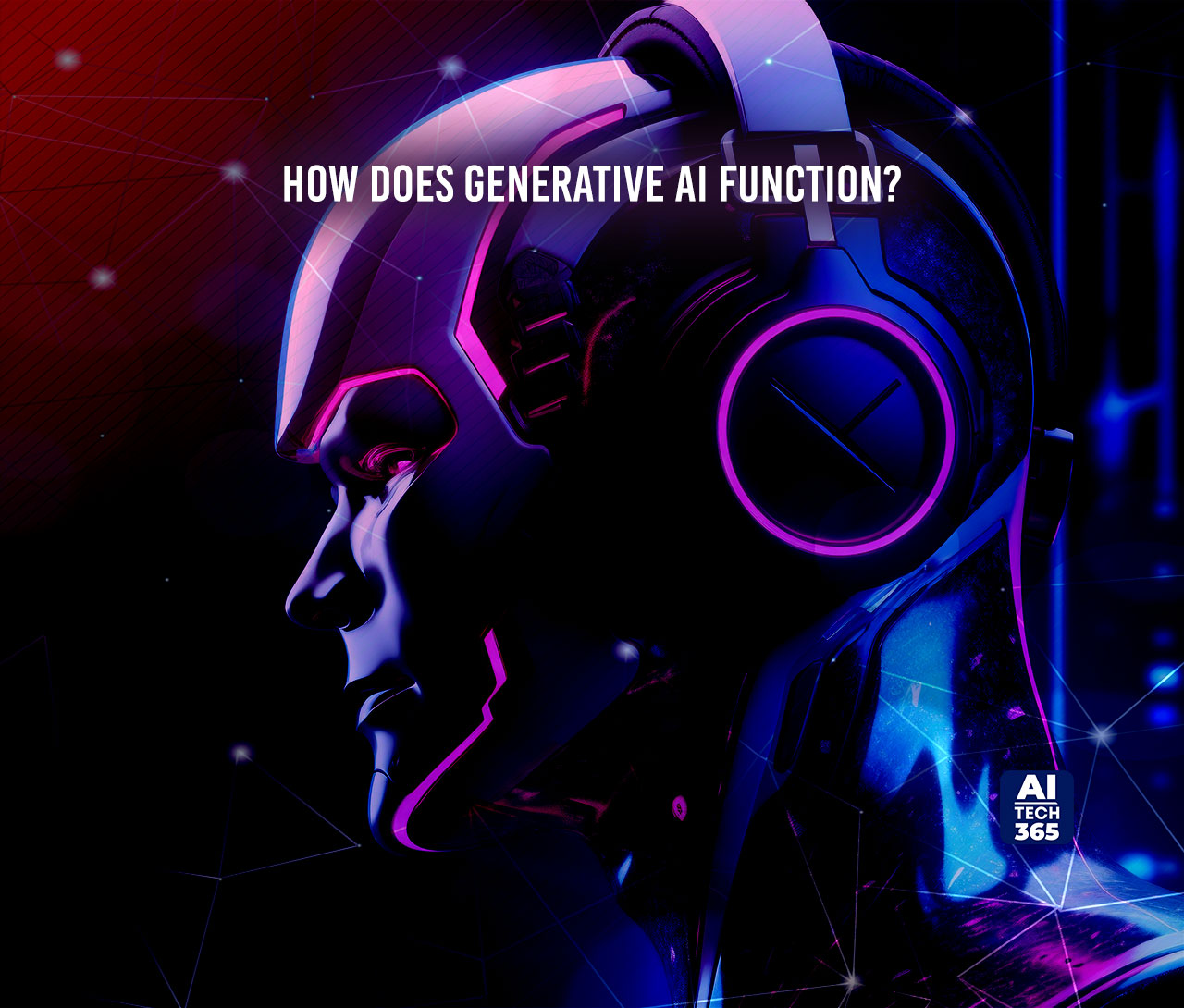Generative AI, powered by advanced algorithms and deep learning models, holds the potential to revolutionize industries and transform the way we interact with technology. From generating lifelike images and videos to creating unique pieces of art and even writing compelling stories, generative AI is pushing the boundaries of what is possible in the realm of artificial intelligence. Let’s understand everything about it.
What is Generative AI?
Generative AI (artificial intelligence) refers to artificial intelligence systems capable of learning from existing data to produce new and realistic content across various domains, such as images, video, music, speech, text, software code, and product designs. These AI systems leverage techniques, including AI foundation models, trained on extensive unlabeled data and fine-tuned for specific tasks. Despite requiring complex mathematical algorithms and significant computing power, AI operates essentially as a prediction algorithm.
Currently, generative AI commonly generates content based on natural language requests, eliminating the need for manual coding. However, its enterprise applications are diverse, ranging from innovations in drug and chip design to advancements in material science development.
What Factors Contribute To The Sudden Hype Surrounding Generative AI?
Generative AI has recently captured significant attention for several reasons. Firstly, it holds immense promise to revolutionize various industries by automating tasks, alleviating mundane work, and allowing developers to focus on more complex coding endeavors. This potential for increased productivity and the realization of ambitious projects has sparked enthusiasm among both software developers and businesses.
Secondly, it has sparked speculation and discussion regarding its transformative capabilities. As a cutting-edge technology, it has ignited the imagination of business decision-makers who grapple with the challenge of investing in emerging technologies while avoiding unfounded hype. The ability of AI to produce unique images, text, and even financial services has garnered considerable interest and curiosity.
However, it’s crucial to differentiate between the hype surrounding AI and its actual technological progress. Despite impressive achievements, the tech industry is prone to rapid cycles of hype and disillusionment. Therefore, it’s essential to approach AI with caution and evaluate its real-world applications and value rather than succumbing to inflated expectations.
How Does Generative AI Function?
Generative AI begins with a prompt, which can take the form of text, images, videos, designs, musical notes, or any input processed by the AI system. Utilizing various AI algorithms, the system generates new content in response to the prompt. This content may range from essays and problem solutions to realistic simulations created from images or audio recordings of individuals.
In earlier iterations, it necessitated data submission via an API or a complex process. Developers had to familiarize themselves with specialized tools and write applications using languages like Python.
However, pioneers in AI are now enhancing user experiences by enabling requests to be described in plain language. Following an initial response, users can further customize the results by providing feedback on the desired style, tone, and other elements they wish the generated content to embody.
What Are The Use Cases For Generative AI?
Generative artificial intelligence finds applications across various domains, enabling the generation of diverse content. Advancements such as GPT have democratized access to this technology, making it accessible to users of all backgrounds. Some prominent use cases include:
Chatbots: Implementing conversational agents for customer service and technical support, enhancing user interaction and support services.
Deepfakes: Deploying deep learning algorithms to create realistic simulations of people or specific individuals, with applications in entertainment, education, and beyond.
Dubbing: Improving the process of dubbing movies and educational content into different languages, ensuring better localization and accessibility.
Content Generation: Generating text content such as email responses, dating profiles, resumes, and academic papers, streamlining content creation processes.
Art Generation: Creating photorealistic artwork in various styles, facilitating artistic expression and design.
Product Demonstration Videos: Enhancing product marketing and demonstration videos with realistic simulations and animations.
Drug Discovery: Suggesting new drug compounds for testing, accelerating the drug discovery process and facilitating medical research.
Product Design: Designing physical products and buildings, aiding in the optimization of product prototypes and architectural designs.
Chip Design: Optimizing new chip designs for improved performance and efficiency in electronic devices.
Music Composition: Writing music compositions in specific styles or tones, enabling musicians and composers to explore new creative possibilities.
Top 3 Generative AI Trends to Watch for in 2024
- Advancements in Generative Models: The emergence of sophisticated generative models like generative adversarial networks (GANs) and transformer-based architectures such as ChatGPT-3 and GPT-4 marks a significant trend in generative artificial intelligence. These models exhibit remarkable capabilities across tasks like natural language processing (NLP), image synthesis, and video generation, pushing the boundaries of AI technology.
- Intelligent Process Automation: Generative AI is increasingly integrated into operational workflows to automate processes intelligently. This trend empowers businesses to harness AI for hyper-personalization and automation of tasks involving text, image, video, and speech generation, enhancing efficiency and productivity across various domains.
- Ethical and Responsible Use: With the proliferation of AI, there is a growing emphasis on ensuring its ethical and responsible deployment. This trend involves the development of policies, regulations, and guidelines to address ethical concerns and mitigate potential risks associated with AI technologies. It underscores the importance of ethical considerations in the development, deployment, and governance of generative artificial intelligence systems.
Final Takeaway
Generative AI has emerged as a remarkable technology with the potential to revolutionize industries and transform the way we create and automate processes. Advancements in generative models, such as GANs and transformer-based models, have showcased impressive capabilities in tasks like language processing and image synthesis.


